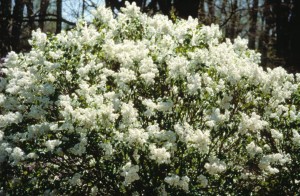Japanese Beetles? Look for this biological control – Winsome Fly Eggs
 Keep an eye out for these eggs on your Japanese beetles, and don’t kill them. They are the eggs of the parasitic Winsome Fly, Istocheta aldrichi – a Tachinid fly. They will hatch using the beetle as a host, killing the beetle and living on as flies to proliferate in your landscape, increasing their effect as a biological control for those irritating marauders of the landscape.
Keep an eye out for these eggs on your Japanese beetles, and don’t kill them. They are the eggs of the parasitic Winsome Fly, Istocheta aldrichi – a Tachinid fly. They will hatch using the beetle as a host, killing the beetle and living on as flies to proliferate in your landscape, increasing their effect as a biological control for those irritating marauders of the landscape.
An essential control for Japanese beetles is careful management of all your insect species,a practice known as Integrated Pest Management, or IPM. Using IPM you can greatly increase the natural controls in your landscape and really reduce your reliance on pesticides, both natural, organic and chemical.
Learn more about IPM, Japanese beetle control, and the Winsome Fly using the links below:
University of Maine Extension Bug Guide >> https://bugguide.net/node/view/5387
U Maine Cooperative Extension Japanese Beetle Pest Management Fact Sheet #5037 >> https://extension.umaine.edu/ipm/ipddl/publications/5037e/
USDA’s Managing the Japanese Beetle pdf >> https://www.maine.gov/dacf/php/pesticides/documents2/master%20gardeners/Keeping%20Japanese%20Beetles%20at%20Bay.pdf
And here is a pdf from a book about Japanese beetle and biological controls dated 1927, on the MSU (Michigan State University) website. Very interesting.
Introducing Evie King, Lilac Propagator
 I would like to introduce you to my old friend and new collaborator at the Nursery, Evie King. Evie comes up from Massachusetts where she and her partner Roger Coggeshall propagated and sold lilacs and were known worldwide as Syringa Plus. By lilacs I mean not just the ones we might know by name but the rarest of the rare…..the almost lost and no longer in the trade—the one of a kind lilacs.
I would like to introduce you to my old friend and new collaborator at the Nursery, Evie King. Evie comes up from Massachusetts where she and her partner Roger Coggeshall propagated and sold lilacs and were known worldwide as Syringa Plus. By lilacs I mean not just the ones we might know by name but the rarest of the rare…..the almost lost and no longer in the trade—the one of a kind lilacs.
Roger was the Lilac propagator at Arnold Arboretum in the ‘50s and after his recent passing I saw that Evie was floating around with no place to continue her passion for keeping these old treasures going. I invited her to use my mist system. Since then, she has moved most of her lilac collection to Maine, added a small propagation house at the Nursery and basically “moved in”, Lilacs and all. (At my invitation of course!)
Now that she’s found a home for these treasures where she can continue her propagating program, Evie is reestablishin her stock of these rare and precious lilacs for the future.
So… I’d like you to welcome Evie to the community of plant enthusiasts and we invite you to come see the show when the Lilacs bloom!





